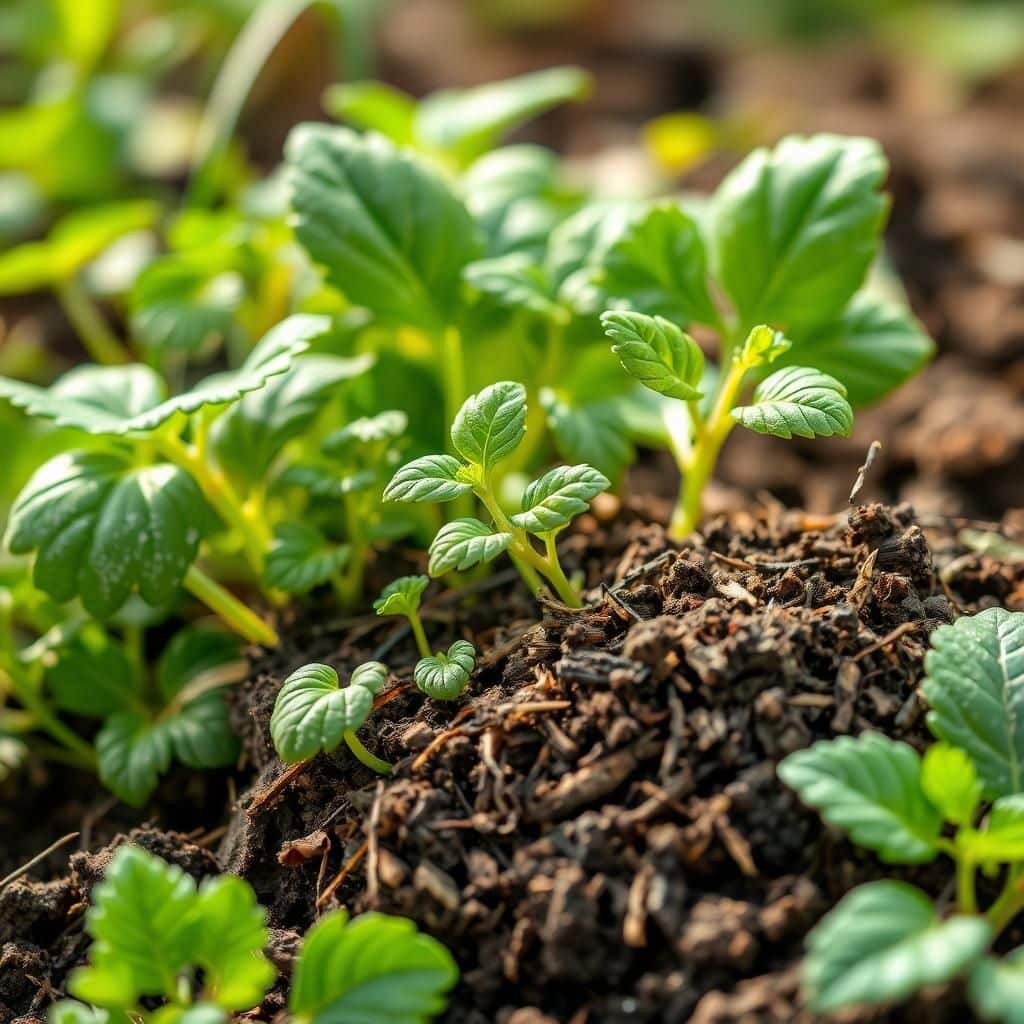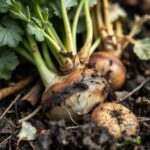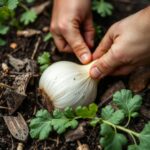What are the three parts you need to start composting? A Beginner's Guide to Composting Essentials.

Composting is an environmentally friendly practice that transforms organic waste into valuable soil amendments. For those new to composting, understanding its essential components can make the process more effective and rewarding. In this beginner's guide, we will explore the three key parts you need to start composting: greens, browns, and moisture. By grasping the significance of these elements and how they interact, you can create a vibrant compost pile that enriches your garden and helps reduce waste. Let’s dive into the basics of composting and set you on the path to creating your own nutrient-rich compost at home.
What are the Three Parts You Need to Start Composting?
To effectively start composting, you need to focus on three main components: browns, greens, and water. The browns consist of carbon-rich materials, such as dried leaves, straw, and cardboard, which provide the necessary energy for microorganisms. The greens include nitrogen-rich materials like vegetable scraps, grass clippings, and coffee grounds, essential for the growth and reproduction of composting bacteria. Lastly, adequate water is crucial as it helps maintain the right moisture level within the compost pile, facilitating the composting process. Striking a balance between these three components will enable you to create nutrient-rich compost efficiently.
Browns: The Carbon-Rich Materials
The browns in composting refer to carbon-based materials that are vital for providing energy to the microorganisms involved in the decomposition process. Common sources of browns include dried leaves, twigs, straw, and shredded paper or cardboard. These materials help aerate the compost pile and prevent it from becoming too compacted. An appropriate balance of browns is necessary to support microbial activity and ensure an efficient breakdown of organic matter.
Greens: The Nitrogen Boosters
Greens are rich in nitrogen and play a critical role in the composting process by supplying the necessary nutrients for microbes to thrive. Examples of greens include food scraps, grass clippings, and fresh garden waste. Incorporating greens into your compost provides the nitrogen that fuels the decomposition process and helps the microorganisms grow and reproduce. However, too many greens can create a foul smell and slow down composting, so it's important to maintain a balance with the browns.
Water: The Key to Moisture Balance
Maintaining the right level of water is essential for a successful compost pile. Moisture helps activate the microbial processes required to break down organic materials. Ideally, the compost should be as moist as a damp sponge; if it becomes too dry, microbial activity will slow down, while excessive moisture can lead to anaerobic conditions resulting in unpleasant odors. Regularly monitoring the water content and adjusting as necessary is crucial for maintaining an efficient composting system.
See also:
Understanding the Carbon to Nitrogen Ratio
A critical aspect of composting is the carbon to nitrogen (C:N) ratio, which ideally should be about 30:1 for optimal decomposition. This means for every 30 parts of carbon (from browns), there should be about 1 part of nitrogen (from greens). Achieving this balance helps create the ideal environment for microorganisms to thrive, ensuring that organic matter decomposes effectively and quickly. Monitoring and adjusting the C:N ratio is essential for producing high-quality compost.
Tips for Maintaining Your Compost Pile
To ensure your compost pile remains healthy and efficient, regular maintenance is key. Turn the pile every few weeks to aerate it, which helps speed up the decomposition process and minimizes odors. Keep an eye on the moisture levels, ensuring that the pile remains damp but not waterlogged. Adding a mix of browns and greens in the proper ratio, as well as balancing water, will significantly enhance the composting process, allowing you to create nutrient-rich compost for your garden.
| Component | Role |
|---|---|
| Browns | Supply carbon for energy |
| Greens | Provide nitrogen for microbial growth |
| Water | Maintains moisture and facilitates decomposition |
The Essential Components for Starting Your Composting Journey
To successfully start composting, you'll need three essential components: green materials, brown materials, and water. Green materials, rich in nitrogen, include food scraps, grass clippings, and coffee grounds. Brown materials provide carbon and consist of dry leaves, branches, and cardboard. Balancing these two types of materials is crucial for microbial activity and achieving proper decomposition. Lastly, maintaining the right moisture level ensures that the composting process proceeds effectively. Too little water can slow down decomposition, while too much can lead to a slimy mess. With these three components in place, you can create a robust compost that enriches your soil.
Understanding Green Materials
Green materials are crucial for providing the nitrogen necessary for composting. These items include fruit and vegetable scraps, grass clippings, eggshells, and coffee grounds. They are typically moist and help facilitate the breakdown of organic matter by *microorganisms*. Including a sufficient amount of green materials in your compost pile can significantly enhance the decomposition process, ensuring that your compost develops rich nutrients beneficial for your garden.
The Role of Brown Materials
Brown materials are another vital component in the composting process, offering a concentrated source of carbon. These include dry leaves, twigs, straw, and cardboard. They help to balance the compost by providing structure and absorbing excess moisture. The right ratio of brown materials to green is essential for fostering a well-aerated environment that supports bacteria and other microorganisms involved in decomposition. Too many brown materials can slow down the composting process, making it essential to maintain a balanced mix.
See also:
Importance of Water
Water plays a key role in the composting process by promoting the activity of microbes that break down organic matter. Proper moisture levels (around 40-60%) are necessary; the compost should feel like a damp sponge, not soaking wet. If your compost pile is too dry, the decomposition process will slow down significantly, whereas excessive moisture can create anaerobic conditions that lead to unpleasant odors. Regularly checking the moisture content allows you to maintain an ideal environment for successful composting.
The Ideal Ratio of Green to Brown Materials
Achieving the correct ratio of green to brown materials is essential for optimal composting. A widely accepted ratio is approximately 1:3, meaning one part green to three parts brown. This balance helps in the aeration of the compost pile and supports effective microbial activity. Adjusting this ratio according to the specific materials you have can fine-tune the composting process, making it more efficient and productive.
How to Maintain Your Compost Pile
Maintaining your compost pile involves turning it regularly to aerate the materials and promote faster decomposition. This can be done every few weeks, and checking moisture levels should also be a part of the maintenance routine. Adding water when needed and ensuring a suitable balance of green and brown materials are necessary steps. Observing the temperature of the pile can also provide insights into the decomposition process; a hot pile indicates active microbial activity, while a cooler temperature may signal the need for more materials or moisture.
Questions from Our Readers
What materials do I need to start composting?
To start composting, you will need three main types of materials: greens, browns, and water. Greens are nitrogen-rich materials like kitchen scraps and fresh grass clippings, while browns are carbon-rich items such as dry leaves, straw, and cardboard. Water is essential to maintain the right level of moisture in your compost pile.
How do I balance greens and browns in my compost?
Balancing greens and browns is crucial for a healthy compost. A general guideline is to use a ratio of about 2 parts greens to 1 part browns. This balance helps to promote effective decomposition and prevent issues like odor or slow breakdown.
See also:
What is the importance of water in composting?
Water is vital for composting as it helps to activate microorganisms that break down organic matter. The compost should be kept as moist as a sponge without being overly saturated. Proper moisture levels ensure that the composting process continues efficiently.
How often should I turn my compost pile?
You should aim to turn your compost pile every 1 to 2 weeks to provide aeration and speed up the decomposition process. Turning helps to mix the materials and introduces oxygen, which is necessary for the microorganisms to thrive and work effectively.

If you want to read more articles like What are the three parts you need to start composting? A Beginner's Guide to Composting Essentials., we recommend you check out our Compost category.
Leave a Reply
Related Articles